Few techniques are used in air layering (based on old Chinese methods):
- Ring Bark technique: scrape off the cambium layer back to wood on a bark portion with length more than 2x the branch diameter (for safety cut off only half ring).
- Tourniquet technique: select branch, loop a wire around and below the junction of a branch, twist tight until the wire cuts into the bark.
- Bridge technique: remove 3-5mm strips rather then full ring-bark all the way around the branch, leaving bark strips for nutrient flows.
- Skirt techniques: make one circular cut with few vertical slits, then peel upwards the bark. Twist a metal ring up under the slivers to stop them moving back and to force the new roots to jump into the moss.
After this, in all cases, is needed to dust the wounded area with rooting hormone powder, then place a ball of sphagnum moss with moist clay around the junction of branch. Around the stem, the rooting mix can be fixed by a sturdy flowerpot or a piece of plastic wrapped around scraped bark portion. The layered plant will start to form roots growing a callous-type of tissue in the rooting ball.
I have already told you two months ago about my attempt to propagate my own edible bonsai Laurus Nobilis, Bay Laurel (Dafin) using air layering.
In April I layered a large branch of laurel tree (the best time to layer is in spring) and now I'm glad to tell you that I have another "baby" bay tree ... actually a clone.

For this project I used skirt technique - and I selected a 6 -7 cm length section of stem without small branches around. With a sharp knife I cut almost all the way around the branch (except 5 mm leaved for plant safety to maintain the nutrients flow) and I peel upward the bark. I twisted tight a metal wire under the slivers until finely cuts the bark on the portion of 5 mm uncut bark. I sprinkled a pinch of rooting hormone powder for hardwood then I made a rooting ball with peat moss and moisten clay and I wrapped a piece of polyethylene film around the stem to hold the rooting mix, securing the wrapper to the stem up and at the bottom with plastic ties. Once a week I re-moisten this mix, inserting water in the plastic "bag" with a syringe dispenser.
Few weeks ago I saw that a good set of roots was forming and after the new roots have penetrated the moss ball we decided that is time to detach the new plant. Without disturbing the roots or removing the ball of moss, last week we cut off the rooted branch and planted it in a ceramic pot.
For the next 2 weeks we will keep the plant under shade until the new root system is well established and developed to sustain the new bay tree. Now my bay laurel bonsai (mother plant) looks somehow different without its rooted branch but I'm very happy about my gardening success and I hope that my new Bay Laurel tree will be happy to look after itself in next period.

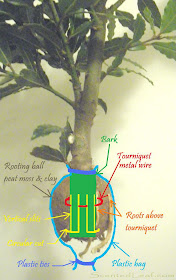
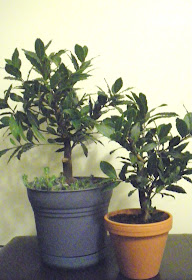
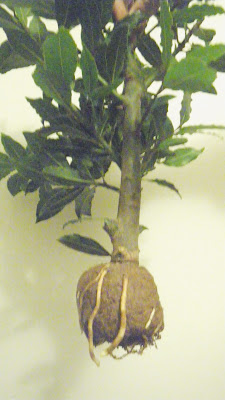
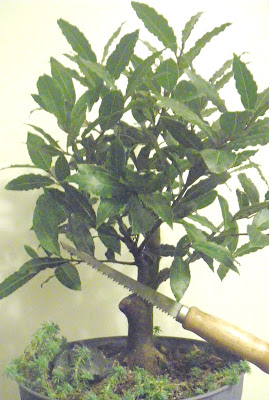
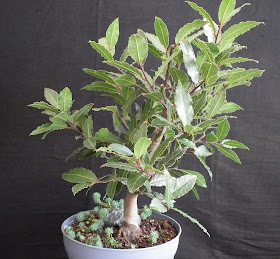
Wow, that's amazing! I've definitely never done anything like this, I'm so impressed! Both of your plants look like they're healthy and thriving, you did a great job.
ReplyDeleteThat really is amazing! I'm still not sure I can do this myself. I think I will need a tutorial class or something. But your website has been very informative. This layering technique looks fascinating. Perhaps I will try this to see if I can do it too. Thank you for sharing your knowledge! I love your pictures too. Great job!
ReplyDeleteI've done this technique with sphagnum moss two weeks ago hope it works.. Do I need to water the moss? If so how often.. Thanks
ReplyDeleteYes, you need to add water to keep the medium wet ... but don't forget to puncture the plastic wrap so the water can drain.
ReplyDeleteGood luck.
How long should it take have sufficient roots to transplant?
ReplyDeleteWow, cool post. I'd like to write like this too - taking time and real hard work to make a great article. but I put things off too much and never seem to get started. Thanks though.
ReplyDeletemodern indoor plant stands
great post to read i was reading this Read Full Article More Help review click to investigate
ReplyDeleteVisit This Link Dior Dolabuy see here now Goyard Dolabuy advice Chloe Dolabuy
ReplyDelete